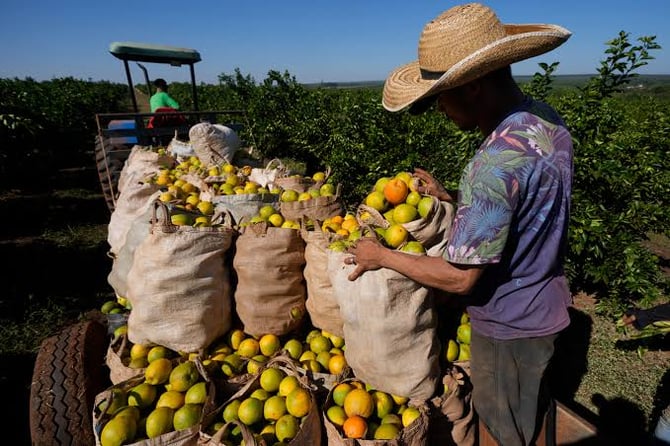Orange Juice Prices Soar, and May Stay That Way

This year's orange harvest in Brazil, the world's largest exporter of orange juice, is projected to be the worst in 36 years due to severe flooding and drought.
Orange juice prices have historically been volatile, fluctuating with the supply of oranges affected by factors like weather and harvest yields. However, the current price surge might persist due to the persistent challenges of diseases and extreme weather affecting major orange-producing countries.
In the U.S., Florida's orange production dropped by 62% in the 2022-2023 season. Similarly, drought has significantly reduced Spain's orange production. These supply shortages have led to soaring prices. In the U.S., the price of a 12-ounce can of frozen orange juice concentrate increased by 42% to $4.27 in April compared to the previous year. In the UK, the price of fresh orange juice rose by 25% over the past year, with supplies at a 50-year low.
The root cause of these supply issues dates back to 2005 when the Asian citrus psyllid, an invasive pest, spread citrus greening disease in Florida, devastating orange trees. Brazil, which also faces this disease, has seen it progress more slowly due to larger groves, but it still affects a significant portion of their crop.
What Does This Mean for Me?
Climate change is exacerbating these problems, with extreme weather events like heatwaves and the impacts of El Niño causing further damage. Brazil's upcoming 2024-2025 harvest is expected to produce 232 million boxes of oranges, down 24% from the previous year.
Producers are considering blending oranges with tangerines to make juice to compensate for the lower yield, though consumer preference for 100% orange juice remains strong.
More News
.webp)
Japan’s Rate Shift Is Rippling Through Global Bond Markets
1 week ago

China’s Growth Engine Stalls as Consumers and Investors Pull Back
2 weeks ago

Egypt’s Recovery Gains Traction as Household Pressure Lingers
3 weeks ago

OECD Warns AI and Tariffs Will Test the Global Economy
4 weeks ago

Zero Tariffs, Higher Drug Bills as US and UK Reset Pharma Trade
4 weeks ago

Catastrophe Bonds Go Global as Climate Risk Meets Yield Hunting
1 month ago
.webp)
Canada Shields Steel and Lumber Industries From Tariffs
1 month ago

Trump Drops Selected Tariffs in Response to Inflation Pressures
1 month ago